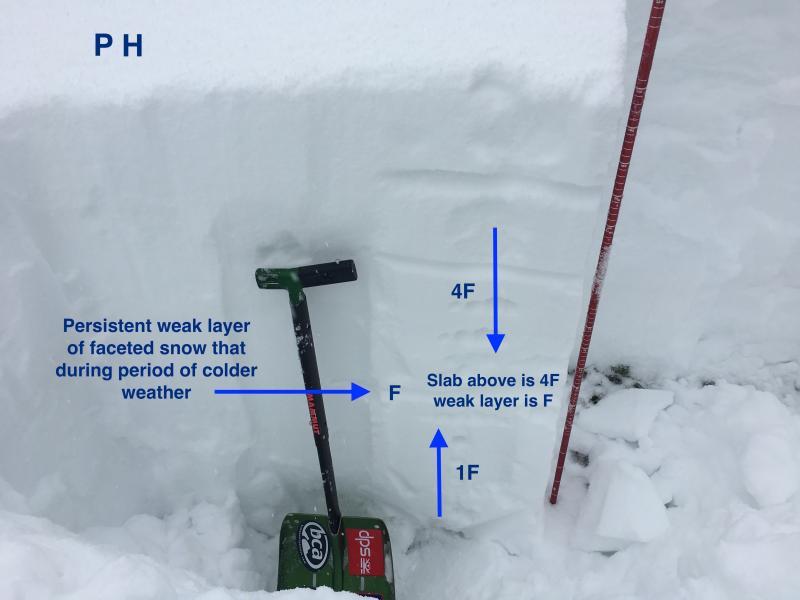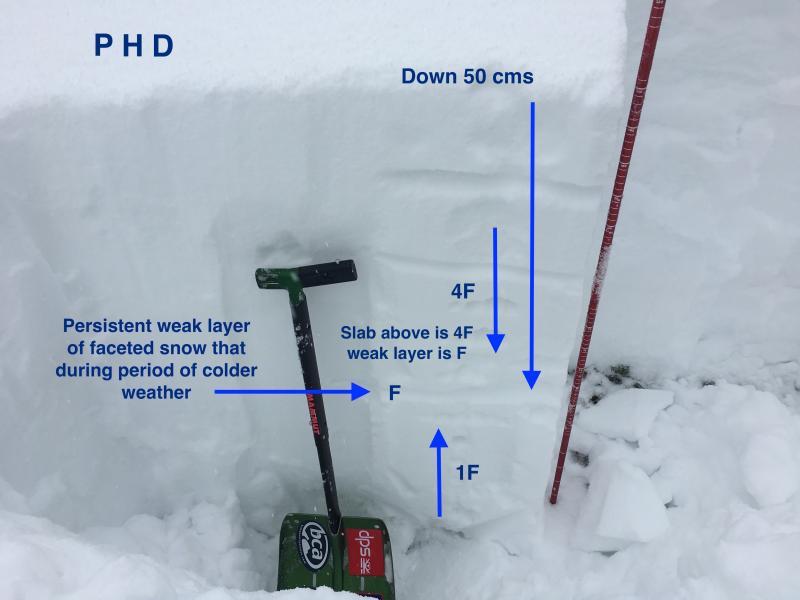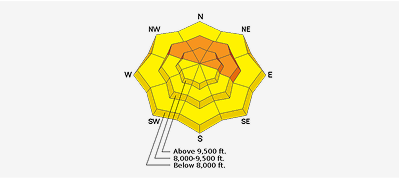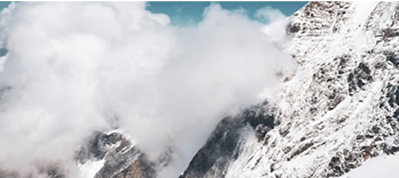I was talking with UAC director Mark Staples and UAC forecaster Trent Meisenheimer about Ian McCammon's 5 lemons as a way of describing structural weaknesses in a snowpack. A while back, UAC forecaster Drew Hardesty told me the PHD approach, that uses three of the lemons. 'P' is a persistent weak layer (i.e. faceted snow or surface hoar), 'H' is a hardness different across the failure plane between the weak layer and the slab, and 'D' is this weak layer must be less than 1 meter deep in the snowpack. The images below illustrate the PHD of the top 50 cms of the snowpack on a NE aspect in upper LCC. I did not include any stability tests in this discussion as I am instead focusing on only the structure of the snowpack.



Overall was finding a Moderate hazard where I was traveling today in upper LCC. Despite the structural weaknesses in the snowpack, still not finding enough snow to tip the scales that would increase the avalanche hazard. My biggest concern is wind drifting on upper elevations. The dense snow is super fun riding and is supportable for very easy travel.






